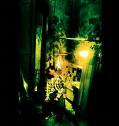Abstract
The essay proposes to detail the visual narrative of time-space continuum presented in the film 2046, made by the Hong Kong director Wang Kar-wei, whose distinguished postmodernist features have been shown by a self-conscious and largely fictional synthesis of memory and imagination in the world of simulation. In 2046, the 1960s writer-protagonist Chow imagines himself as a Japanese who lives in the future year of 2046, devastatingly looking to recapture lost memories. In many ways, the postmodernist visual aesthetic embedded in 2046 recalls Jean Baudrillard’s concepts of simulation presented in Simulacra and Simulation. Not merely suggesting that postmodernist culture is artificially saturated by imagery, infused with media, Baudrillard further advances that we has lost the ability to make sense of distinction between nature and artifice, and that something we recognize as real is actually a simulation of reality. To begin with, in the first part entitled “Spatial Pastiche,” I will concentrate the focus on Jameson’s notion of pastiche proposed in Postmodernism, then, discuss how the Jameson’s pastiche has been treated as a new kind of spatial language to deal with a perspective on both the worlds of simulation in the future 2046 and 1960s, focusing on the explorations of an intertextual relation between two sub-texts 2046 and 2047, of the probing “tree hole” metaphor to look into Chow’s unconscious world. In the second part, the Jameson’s “schizophrenic temporality” is beneficial to understand the writer-protagonist’s sentimental return to the world of mental splitting. In addition, Chow’s split time sense allow viewers to regard the passage of time as an elastic continuum filled with myriad perceptual possibilities. In the third part, I will address the nostalgic images of Hong Kong in the 1960s, set against the apathetic backdrop of future Hong Kong in 2046. Important in this section is how the cinematic “nostalgia” gives us an ambivalent vision that is waged between fleshly reality and imaginary desires that open up the vicissitudes of spatial/temporal perception. By focusing on the leitmotif of unrequited love in 2046, Wong instantly poses problems regarding each character’s sense of self responding to the imaginary world of memory.
Key Words:pastiche、schizophrenic temporality、simulation、the world of obscenity、postmodernist city、2046、1997、1960s、Hong Kong、the ecstasy of communication、nostalgia、memory。


 字體:小 中 大
字體:小 中 大









